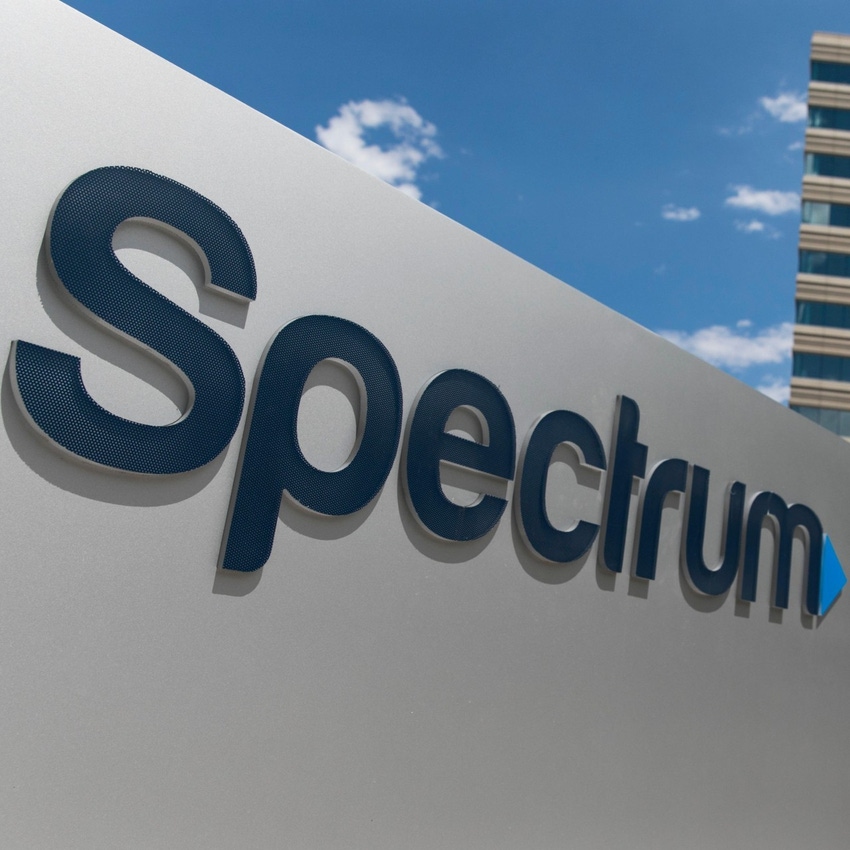Charter changes approach for its cable access network – sources
Sources said Charter's decision to go with remote PHY and a virtual CMTS could create more industry alignment and economies of scale.

Charter Communications is pursuing a distributed access architecture that pairs remote PHY (R-PHY) with a virtual cable modem termination system (CMTS), multiple industry sources tell Light Reading. That decision was made after an in-depth review of the path forward for Charter's hybrid fiber/coax (HFC) network.
Before this review, Charter focused on remote MACPHY, another option for a distributed access network (DAA). Remote MACPHY places both the MAC processing and the PHY nodes deployed at the network's edge. The PHY layer (CMTS elements such as the QAM modulators) in R-PHY is distributed, but the MAC (media access controller) is centralized. Charter's choice to go with R-PHY has implications for how the DOCSIS 4.0 product ecosystem will need to evolve to support it.
Figure 1:  Charter's decision to pair remote PHY with a virtual CMTS for its next-gen HFC network could generate some critical industry alignment on a distributed access architecture (DAA), a prerequisite for DOCSIS 4.0.
Charter's decision to pair remote PHY with a virtual CMTS for its next-gen HFC network could generate some critical industry alignment on a distributed access architecture (DAA), a prerequisite for DOCSIS 4.0.
(Source: Charter Communications)
For now, it's not clear if Charter wants to go solely with a vCMTS that uses off-the-shelf hardware in tandem with a virtual core across its networks. It could enable a vCMTS by converting existing integrated CMTSs into MAC cores.
Charter's network evolution review was the subject of much chatter last month at the SCTE Cable-Tec Expo in Philadelphia. "They're reviewing everything," a person familiar with the plan said then, noting that Justin Colwell was leading the evaluation; Colwell is an exec who was recently promoted to EVP of connectivity technology.
Charter's review, sources said, also included another look at Full Duplex DOCSIS (FDX), an option for DOCSIS 4.0 that Comcast favors. However, sources said Charter appears to remain relatively fixated on the Extended Spectrum DOCSIS (ESD) flavor of D4.0. Charter hosted a private demo of its latest implementation of ESD at last month's show.
Still, some industry insiders don't view the options for D4.0 as mutually exclusive. FDX, they say, could work well for networks where taps are underground and not easily changed without higher construction costs. On the other hand, ESD could be a better option for the aerial plant that enables easy access to network equipment that needs to be swapped out. While ESD seems to be the primary D4.0 path forward for Charter, it's possible that the operator could end up using FDX in certain circumstances, sources said.
Charter, which is about to undergo a CEO change and has discussed some details about its network evolution, did not confirm any specific details about its plans for R-PHY or a vCMTS. However, the company hinted that it would use various technological options.
"Our network evolution strategy will incorporate a variety of approaches to achieve faster speed to market, lower cost and more flexibility than any of our competitors. We'll have more to share soon," Charter said in an emailed statement.
Though Charter has altered its architecture, the timing of Charter's next-gen HFC network deployments hasn't really changed, sources said. Charter has not announced its timeframe for a DAA deployment on its residential HFC networks. But a couple of sources believe that's about a year away as the operator's near-term focus remains centered on "high-split" upgrades that increase the amount of spectrum dedicated to the upstream on Charter's existing DOCSIS 3.1 networks.
And while Charter apparently is not joining Comcast by going big with FDX, its move to R-PHY and pursuing a vCMTS provide more technological alignment and commonality for the industry. Notably, both remote PHY and the vCMTS fit prominently into Comcast's new HFC architecture.
Charter's pick viewed as pragmatic, industry-aligning
A cable engineer said there's "no big technical reason why" Charter shifted its focus to R-PHY. He said pragmatic, business reasons played a significant role in Charter's decision to pursue R-PHY. In addition to establishing more industry alignment around DAA, the move also enables Charter to take advantage of some of the scale in this area created by Comcast's deployments.
"It's a practical decision when you think about it," Jeff Heynen, VP of broadband access and home networking at Dell'Oro Group, said, pointing out that Comcast has already upgraded about 50,000 nodes to remote PHY in support of the operator's DAA strategy.
But Heynen believes that "the industry breathed a sigh of relief" when Charter's decision started to make the rounds. That decision, Heynen suggested, "was holding things back" for a sizable portion of the cable industry.
Charter's decision "removes some uncertainty that's good for the [cable tech] ecosystem," agreed an industry insider with knowledge of Charter's plans.
And that alignment could extend further as industry sources believe a set of other major cable operators – Cox Communications, Rogers Communications and Shaw Communications – that joined Charter on a joint development agreement (JDA) with Broadcom will ultimately follow Charter's lead.
Decision not completely wrinkle-free
One rub with Charter's plan is that the ESD option for DOCSIS 4.0, which envisions a network built to 1.8GHz while keeping the upstream and downstream traffic separate, was originally designed for remote MACPHY. They said Broadcom would need to step up to support remote PHY products that can operate at 1.8GHz.
But engineers and execs in the cable tech field don't see this as a massive hurdle.
"The reality is it's not that big of a change. It's not a big technical hurdle for anybody," an exec with a cable network supplier explained. "The pivot [at Charter] happened very quickly and this is one of those things that just needs to get worked out."
Operators may have the option to start deployments with remote MACPHY devices (RMDs) that could later be "flipped" to an R-PHY device (RPD) using a firmware update, a source familiar with D4.0 product roadmaps and the Broadcom JDA explained.
The bigger, helpful implication, the source added, is that operators will have choices with the ESD option for DOCSIS 4.0 – they will be able to do that with RPDs and/or RMDs.
"You don't have to commit everything day one. You don't have to upgrade everything to make it work," the person added. "There's a lot of flexibility. Some operators have chosen their path, others haven't yet. But this way, they don't have to choose everything day one."
Charter's pivot, sources said, could end up creating other benefits because it could open up the market to another chipmaker, such as MaxLinear. It might also open the door of opportunity for various vendors with vCMTSs in their arsenals, including Casa Systems, Cisco, CommScope, Harmonic and Vecima Networks. Another beneficiary could be Falcon V Systems, a supplier that counts Charter and Liberty Global as investors.
Does remote MACPHY have any legs?
Opinions vary on what Charter's move means for the remote MACPHY market and a new Flexible MAC Architecture (FMA) specified by CableLabs. At this point, it seems that Liberty Global, GCI, Mediacom Communications, Australia's NBN and Vodafone are among the operators still focused on remote MACPHY for HFC upgrades.
"There's going to be both remote MACPHY and remote PHY, but Charter moving to RPDs is going to hurt the RMD world," a source with a top cable tech supplier said.
An exec with another supplier focused on both options wasn't overly concerned, believing that there are enough other operators focused on remote MACPHY to create a sizable enough market. Additionally, the person added, there are enough "corner cases" for remote MACPHY, such as serving multiple dwelling units (MDUs), even among operators that end up leaning heavily on R-PHY.
Multiple cable operators contacted for this story agreed that it's possible that operators that go with R-PHY as their lead horse will end up using remote MACPHY as well.
Some warn that making selections now doesn't mean that an operator couldn't make another big change down the road. "Even if we set a direction, we always reserve the right to change it back," a cable engineering source said.
Related posts:
— Jeff Baumgartner, Senior Editor, Light Reading
About the Author(s)
You May Also Like












